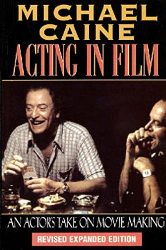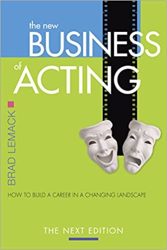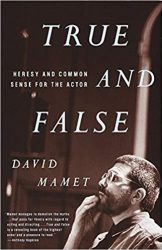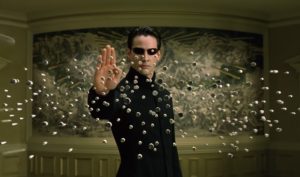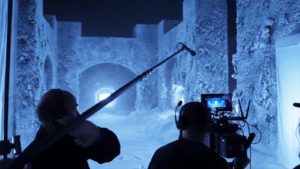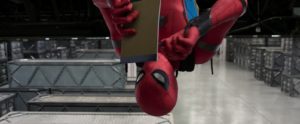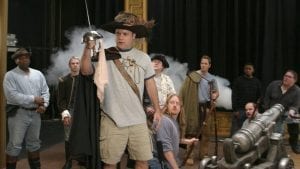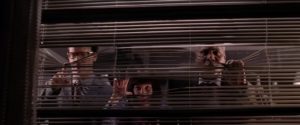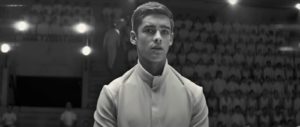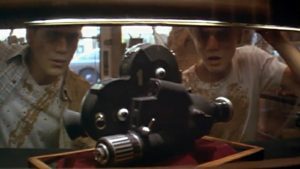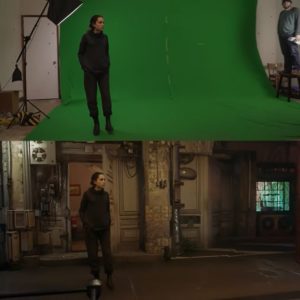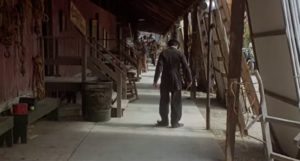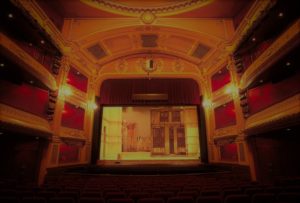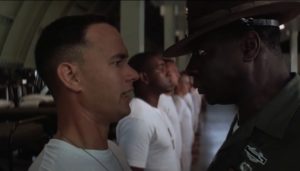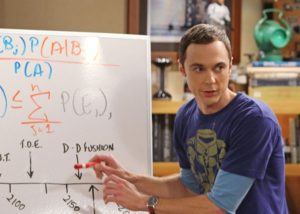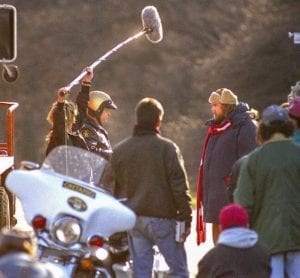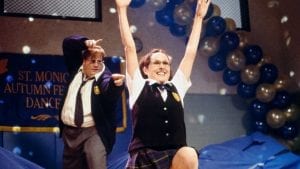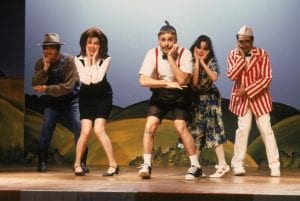If you’re considering taking an acting class at an acting studio, you may be wondering, “What actually happens in an acting class?” Although there is some variation based on the specific type of class (on camera, scene study, etc – more on that below) and the individual acting teacher, most classes tend to have general similarities. Here is what is often done in acting classes:
Acting class primarily involves performing (by yourself or in pairs) while a teacher coaches or gives feedback. Often classes have 12-20 students and are ~4 hours (once a week for 5-6 weeks). You spend ~20 min performing and getting feedback and the remaining ~3.5 hours watching others do that too.
The details are described below, and this structure is typical of the types of acting classes in acting studios. There is some variation if it’s an acting class for beginners, or a film/TV class, or an auditioning class, and we’ll go over some of these specifics in this article.
1. Preparing before class by memorizing lines.
In advance of the class, students generally receive an email containing the scene or monologue that they will be performing in class. You will need to memorize it before class. Or at least this is the expectation.
What kind of scene might you get? That depends on what kind of class it is:
- First class: If it’s a beginner acting class and it’s your first day, you will likely get a monologue because you don’t know anyone in the class yet to practice 2-person scenes with.
- Scene study class: If it’s a standard acting class, most likely it’ll be focused on theatre, so the scene will likely be from a play. Scenes from plays tend to be long, so you might expect to get something that is between 5-10 pages or more.
- Film/TV class: If it’s a film/TV class or an audition class, you can expect to get a scene from film or television. Such scenes tend to be shorter than scenes from plays. You might get something that is between 1-3 pages long. Note: if you’re taking a film and TV class, the expectation is, usually, that you took a beginner acting class before the film and television class.
And, just to reiterate, they expect you to come fully memorized, because otherwise it’s a waste of time (because it’s hard to focus on acting when your mind is busy trying to remember the next line). I remember how, after acting for about a year, I decided to take a boot camp class that was 2 weeks working on a scene from a play and then 2 weeks working on a short scene from film and television (audition style). I was given my audition script (“sides”) and I worked on it every day for roughly an hour. When I showed up to class, I was shocked to find out that, out of the 12 people in the class, only 2 other people were fully memorized. And out the 3 of us who memorized it, I was the only one who had gone past memorization into really trying to perform and understanding the scene. What was the resulting class? The ones who didn’t memorize hardly got to perform and got hardly any feedback. Only I got proper acting feedback because I was the only one who was considered ready to focus on acting and receive acting feedback. In another class, the instructor was so upset that so few people were memorized, that they walked out of the room. Therefore, always come prepared.
How do you know if you’re prepared enough? In the video above, Jeff Daniels explains that the acting part (the “dancing over the script”) happens once you have the foundation of memorization, and for him the criteria of being fully memorized is that he’s able to quickly run through the script without a single error. If you would like to learn more about how actors memorize lines, check out the article about how famous actors memorize lines.
2. Starting class with a warmup.
Not all acting classes begin with warmups, but if an acting class does, the warmup tends to be either based on theater or on improv. Theater-style warmups typically include stretching and body movement as well as breathing exercises. Here are some examples of such warmups:
Improv warmups may be simple improv games like Red Ball, Big Booty, Zip Zap Zop. Just for fun, here’s how you play Zip Zap Zop, both the simple version and a more advanced variation:
Doing warmups in acting classes can be useful not just to warm up for the acting class but also so that you can learn warmups that you can use elsewhere later. For example, Tom Hiddleston says that the Big Booty warmup is one of the rituals he does before going on stage. You can see him describe it and you can see how its played in the other video below.
Of course, there are a lot of possible warmups, so you might get something completely different. Here’s an example of a warmup from one particular acting class; in this warmup, every participant has a chance to do a movement that everyone else has to copy:
Different instructors have different preferences regarding warmups, so if the warmup is something you’re picky about, it could be something you might want to pay attention to when you audit an acting class before signing up for it. (Auditing a class means attending the class as an observer, without participating. It’s quite common to audit a class, and whether it’s free or not depends on the acting school, so just contact the acting school to ask what their policy is on auditing.) If you’re wondering what the point of warmups is, check out the warmups article.
3. Performing the memorized scene or monologue.
The way the performing part of the class is done depends on what kind of class it is. If it’s a standard acting class, and you’re doing a monologue, you’ll be performing on your own. If you’re performing a scene, you’ll be performing in pairs. You can see examples of this in the videos below.
That being said, the way most acting classes are taught is very similar. Either the acting teacher will interrupt the scene and give you coaching and feedback and make you do something over again OR the teacher will wait until you finish your scene and then give feedback and coaching. The first way is more common, in my experience (if you are curious to know why, send us a message on Instagram).
In film and TV classes, you can expect to be on camera and recorded so, instead of just performing, the rest of the class will also see on you screen. You might perform in the first half of the class and then watch the recording in the second half of the class, or your recorded scene might be sent to you after class, or as shown in the video below you will be shown on screen while you perform.
As described in the video below, seeing the recording and how things appear on screen can help both the instructor and the actor see what is working and what isn’t.
In audition technique classes you will essentially be doing the same material that you would have in film and television classes but, instead of both people coming up and performing on-camera, in an audition-style class one person will be in front of the camera and the other person will be behind the camera (known as off-camera). The person behind the camera only reads their lines and does not perform. Therefore, the camera will only be recording one person’s performance. After the first person performs, they will switch positions and do the scene again. In other words, the reader becomes the performer and vice versa. You can see an example of a recorded audition scene below:
4. Getting feedback and explanations.
As you perform, the instructor might interrupt the performance to tell you to do things in a certain way or to discuss acting elements. This interruption might be a few seconds or longer, such as a 10-15 minutes, depending on the acting teacher and how verbose they are. For example, I remember taking a class where teacher was very verbose and our sessions were 5-6 hours long.
That is why it is always very important to audit a class before you sign up for it, so that you can see which class has the teaching style that works best for you. Some people might really like to sit and just listen because it’s safe, while others might want to act and be more active. Therefore, an acting teacher who likes to lecture and talk a lot in class might be better suited for one type of student than another. That being said, it is normal for many acting teachers to do lots of talking to explain ideas.
To get a sense of the kinds of topics that an acting teacher might talk about, you can take a look at the video below. It’s more of a masterclass than an acting class (because you can see that it has a large audience, so only a few people are participating while the rest are just watching), but you can see the kinds of comments that are made. By the way, notice that the students have their lines memorizes so that they’re able to focus instead on the nuances of acting.
5. Watching fellow classmates' performances and feedback.
Even though an acting class might be 4 hours long (3-5 hours is normal), it’s typically the case that you only get attention from the teacher for something like 20 minutes of that class (less if you don’t come memorized, since they know that no matter what they say you’ll still be distracted by reading/remembering at this point, so there’s no point in talking about acting techniques before everything is memorized). Since everyone in the class needs to get a turn, the result is that for most of a class you’re an audience member, watching your fellow classmates’ performances and listening to the instructor’s feedback for them.
Thus, it’s the norm to have classes where you spend a lot of time listening and watching others. However, I have had some classes, especially more advanced classes, that were structured to help reduce waiting times and increase practice times. Here are some examples of such class structures:
- Practicing while others are performing. The class might be divided into two groups. Those in the first group would take turns performing and being audience members, while those in the second group would be in a different room practicing. Once everyone in the first group had performed, the second group would do their performances while the first group would now go into the other room to practice. Another variation of this class structure is where there are more groups, and everyone practices except for one group that goes to a different room to perform.
- Scheduled attendance. I took a class at a studio where everyone was a working actor and, rather than having a 4-hour class per night, students were scheduled in 30-min blocks. So you would show up, watch a few scenes, perform, and then leave. Thus, the audience was changing throughout the 4-5 hours of class that evening.
However, the norm is still for everyone to be together. This has pros and cons. On one hand, it’s advantageous because seeing the feedback that others get can help you learn more, and also the instructor might not need to repeat the same kind of advice many times. However, of course, a disadvantage is that you get less actual acting time, and it might not feel useful if the advice you’re hearing does not apply to you.
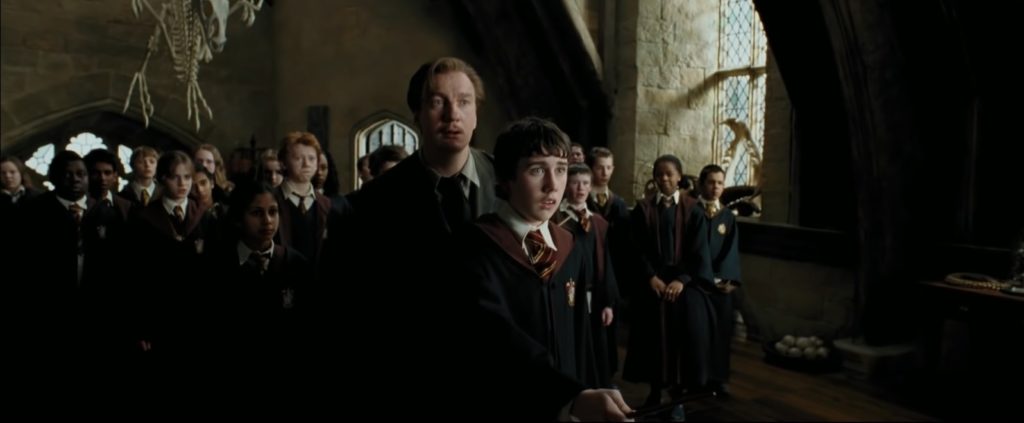
What can you do about that?
One solution is, again, make sure you audit the class in advance to see if there are any classes that have the strucutre you like. However, class structure variety is often limited (many are the same) so the main solution is just to make sure you get a good amount of practice time outside of class (and you of course need to do that anyway). By the way, you can also get additional acting feedback outside of class by going to acting gyms. There are different kinds of acting gyms and their session structures may be different; however, as an example, we have an acting gym on Meetup that is structured like an acting class except we mostly do short scenes with each other, get only brief feedback, and then practice there again (instead of at home) and perform again for additional feedback so that it feels like two acting classes within one 2-3 hour period (to learn more, click here). I created this acting gym because, when I became a more experienced actor, spending hundreds of dollars on classes where I would mostly sit and wait no longer felt reasonable when I just wanted to practice and hone my skills. I just needed a community of actors to practice with (and that’s what the acting gym basically is).
But, just to emphasize, acting gyms are a supplement to acting classes and not a replacement for them if you’re planning to become a professional actor. If you don’t take acting classes, you won’t be taken seriously in the industry—it’s like trying to become a high school teacher without a teaching degree; you can still get parts in small independent places, but the major places won’t even consider you if you don’t have recognized training. The reason I warn you about the long sitting times in typical acting classes is so that you can accept that in advance and be ready to do lots of acting outside of class as well.
6. Getting instructions about next class.
After everyone is done performing and getting feedback, the instructor tells the students what scene will be covered next class so that they can prepare.
For a beginner acting class, here is an example of what you might have from week to week (assuming one class session per week, which is typical):
- Class session 1: Performing monologues (received by email in advance) and getting feedback.
- Class session 2: Working on those monologues again after having had an opportunity to practice following the feedback last week. At the end of this session, students might be paired up so that next week they can perform a scene together (typically a scene from a play that is 4-10 pages long).
- Class session 3: Performing those 2-person scenes after spending a week practicing it with your partner outside of class. Each student would get individual feedback, coaching, and advice. Depending on how well the scene is prepared, each group might have half an hour on stage.
- Class sesssions 4 and 5: Continuing to work on the same scene to truly start understanding what it takes to be an actor, the discipline required to be an actor, and the depth you can go into with a simple scene of 10 pages.
Again, that is just one example and it can vary depending on the class and instructor. Other classes may involve changing scenes more frequently, working on a scene for only one week instead of multiple weeks. Changing scenes more frequently is more common in intermediate and advanced classes since actors there might already have the discipline, knowledge, and skills to memorize and perform well faster.
There are also classes where all the weeks are spent just working on one scene. The reason you might only perform and work on one scene is to create the actor discipline of really delving deep into a scene. When you focus on one scene for several weeks, you have the luxury of rethinking and reevaluating and can create a much deeper performance.
7. Practicing outside of class.
Again, if there’s just one thing you learn from this entire article, let it be this: spend lots of time preparing outside of class. It’s not only a recommendation, it’s actually a requirement (as mentioned before, instructors might not give you much feedback and performance time if you come unprepared).
More importantly, your improvement as an actor will depend not on the amount of class you take but on the amount of work you do outside of that class. If you’re taking a weekly class and rehearse your scene outside your class for 30-40 minutes daily, you will come much more prepared, with more polished work, and with a greater understanding of what acting is than someone who only works on it once or twice during the week. Just like with any skills like volleyball, dancing, or chess, the more time you put into it, the better the results will be.
To help you learn how to prepare outside of class, you can check out the following articles:
- How famous actors memorize lines
- Acting exercises
- Acting exercises you can do alone
- How to practice acting at home by yourself


